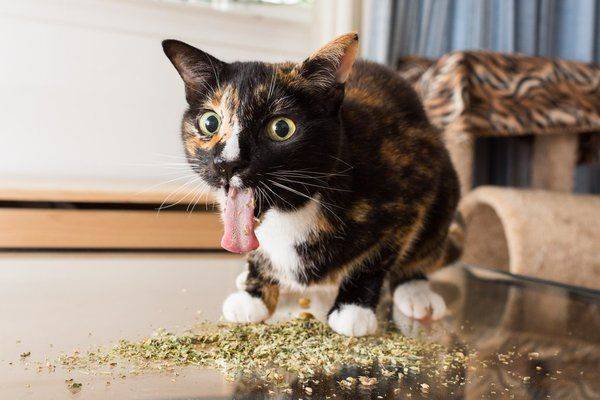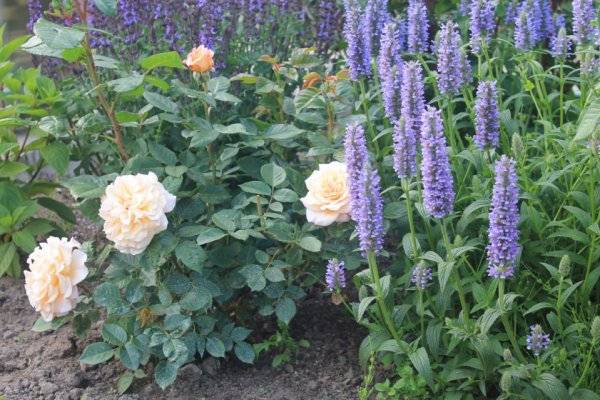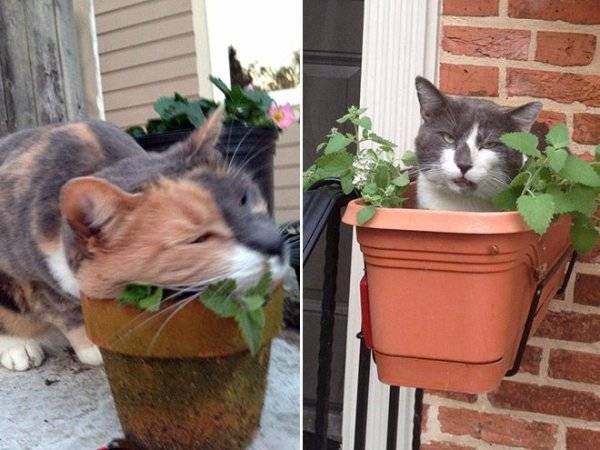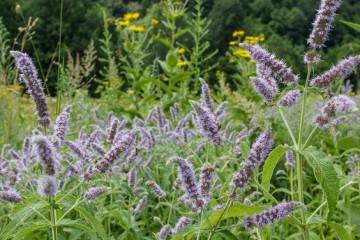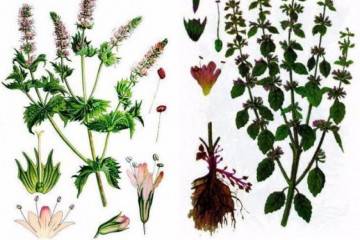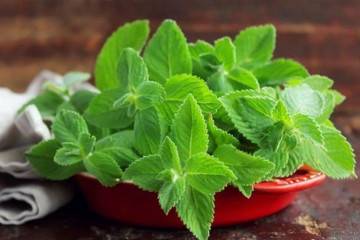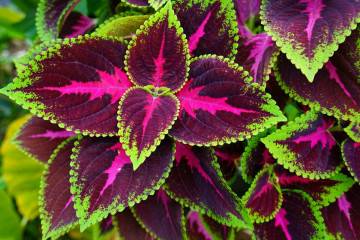Catnip - what kind of plant is it and what it looks like
Content:
Catnip is similar in effect to valerian. Experienced feline breeders use it as a sedative for pets, some prefer alternative medicine recipes to treat themselves.
Cat mint (Nepetia cataria) - what kind of plant is it?
Catnip - not all gardeners know what it is. But this is a herbaceous perennial, reaching a height of 1 m. It has several other names: lemon catnip, or catnip, which it received due to the increased attention of cats to fragile bushes.
Short description
The catnip (Catnip) has a long and straight stem, on which heart-shaped leaves are serrated along the outer edge. It has small flowers of a violet or purple hue, and a hint of lemon is clearly felt in the smell.
What is the difference from regular mint
The main difference between the two types is the essential oils that make up the composition. In peppermint or mint, the base is menthol, in catnip it is nepetalactone. Another difference is a completely different scent. The difference in smells is associated with the same essential oil.
In appearance, the varieties will not differ much, only the flowers will show belonging to the culture.
Beneficial features
Catnip, or catnip, is classified by veterinarians as natural correctors that help correct the behavior of a pet. Each animal reacts to it differently. There are several factors due to which its use is justified:
- with gastric spasms, the active components of the plant stop them, suppressing the vital activity of the pathogenic microflora;
- in stressful situations associated with moving or long trips, a small amount of dry or fresh raw materials makes it easier for the pet to endure an unpleasant event;
- adding a small amount of dry catnip to food allows you to feed the handsome refusing to eat, due to the components, the animal's appetite sharply increases;
- the herb can be used to cleanse the pet's gastrointestinal tract from worms.
The main advantage of veterinarians is a mild psychotropic effect. Excitement or pacification after use lasts a short time and passes without harming the health of the animal. In any form, it is not addictive and addictive.
The use of herb is to help not only animals, but also humans. The healing properties of the variety are used by both official and traditional medicine. It is used in the presence of the following factors:
- with migraine attacks and headaches;
- depression and apathy;
- hysterical fits and melancholy;
- spasms of internal organs, especially the digestive department.
Catnip helps to normalize metabolism, activate the immune system, lower blood pressure and glucose levels.
Why cats love the smell of mint
The attractive scent is associated with one of its components - nepetalactone. That is why animals remain indifferent to another scent, and from this they lose control over themselves.
The principle of influence on the cat
With direct contact, inhaling the smell, essential oils pass into the pet's respiratory tract, causing a signal that goes directly to the brain - the hypothalamus. The animal has a short-term effect, reminiscent of drug intoxication, with hallucinations and changes in habitual behavior.
When using catnip, the result depends on the pet's body:
- a lazy and lethargic animal becomes playful;
- overly active goes into a passive state;
- in some cases, it may look insane or drunk.
This condition should not cause concern, it is a normal reaction of the feline body to the active components of the catnip. There are no narcotic substances in its composition, and it does not cause addiction.
The attractive appearance of the culture leads to mistakes of the owners of the personal plots. They often plant mint around the perimeter, including in mixes, decorating borders. The strong lemon scent attracts wild bees and pets. Over time, the overgrown bushes become a favorite resting place for cats, which simultaneously hunt insects. The result of incorrect planting is trampled valuable crops located next to the cat's joy.
Is catnip harmful to cats?
Abrupt changes in behavior lead to thoughts about the dangers of culture for the health of tetrapods. Scientific studies have proven that it is absolutely harmless and does not lead to addiction of the feline organism, reminiscent of a drug.
Veterinarians remind that measure is needed in everything. In theory, pets themselves know when they need to stop in order to leave the world of dreams, but some individuals with a weak character arrange constant lying in the thickets. Veterinarians refer to the serious consequences of contact with a hallucinogen as dyspeptic disorders when overeating fresh greens.
The second problem is the non-standard behavior of the animal. If, after consuming weed, the pet behaves aggressively, rushes at any moving object, then it is worth stopping his communication with the main source of hallucinations.
Why the cat doesn't respond to catnip
Statistics indicate that almost 30% of pets do not perceive it as a hallucinogen. The peculiarity is associated with a hereditary predisposition: if the parents did not have certain receptors, then the next generation will also be indifferent to the catnip.
Growing catnip in your backyard
Planting works are carried out in several stages.
Purchase or selection of seed
If you want to plant bushes on your garden plot, you need to find good quality seedlings or grow them yourself. First you need to decide on a catnip variety. Many varieties tolerate both hot weather and winter cold well.
The purchase of seedlings is carried out in specialized nurseries or garden centers - places for professional cultivation of crops. When purchasing, you need to pay attention to the condition of the seedlings. They should not show signs of mechanical damage and diseases. Healthy foliage is even, grayish-green in color and without whitish or yellowish spots. The soil in pots should be free of foreign matter, sufficiently moist.
Site selection for future planting and soil preparation
The catnip develops better in well-lit areas with free access to sunlight. Some varieties do well in partial shade. The site should be located on a hill, lowlands and the close occurrence of groundwater will lead to rotting of the root system. There should be no tall crops next to catnip as it needs a lot of space.
Loose, light and fertile soil types are preferred. Preparatory work begins in the fall: the site must be dug up to the length of the shovel bayonet. Fertilize the soil with a mixture including:
- humus - 3 kg;
- ammonium nitrate - 20 g;
- superphosphate - 30 g;
- potassium sulfate - 10 g.
Landing in open ground
Preparatory work begins after the snow melts and the soil warms up. The previously selected area is re-dug up and leveled. Water the seedlings or young seedlings abundantly, this will help them to be easily removed from the containers.
Small pits are dug on the site, the distance between them is maintained at least 30 cm.When tall varieties are planted, it is increased to 40-50 cm.It is important to remember that mint can grow strongly under favorable conditions.
A small amount of river sand is poured into each hole as a drainage layer. Seedlings are carefully removed from the boxes so as not to damage the root system and planted in the prepared holes.
Further care
Taking care of catnip is easy:
- watering is required moderate and rare, from 1 to 2 times a month. This species is drought-resistant and is not afraid of a slight drying out of the land;
- loosening is carried out several times per season, it provides the root system with fresh air. Also, a small amount of mulch is poured in parallel;
- top dressing includes the introduction of mineral fertilizers: before the formation of buds, and then only after pruning;
- the bush does not respond well to pruning, but if its shoots are halved, then you can expect re-flowering in the autumn months.
Shelter of bushes is carried out in the absence of snow. It is enough to take spruce, pine spruce branches or fallen leaves. Catnip is a frost-resistant species, with a sufficient amount of snow, it does not need additional protection.
How to grow catnip at home
The constant purchase of a fresh catnip is a financially costly occupation, and the absence of your own personal plot leads the owners of fluffy handsome men into despondency. Alternatively, you can use a simple method of growing bushes in flower pots.
Step-by-step instructions for growing in a pot
Lemon Catnip can be grown from seeds, seedlings, cuttings, or by dividing an old bush. Seed planting is carried out at the end of February. The crates should contain a light formula.The work is carried out according to the following algorithm:
- The seeds are sown in even rows, there should be a distance of 5 cm between them.
- They are immersed in the soil to a depth of 0.5 to 1 cm.
- The boxes are covered with plastic wrap and sent to a warm room.
- After the appearance of the first shoots, the containers are moved to the light.
- The formation of the first true leaf allows transplanting seedlings into small pots.
So that the bushes do not stretch up, immediately after pecking the seedlings, the air temperature is lowered to 13-15 ° C, and after a week it is raised to 18-20 ° C.
Poor growth of seedlings requires feeding with a solution of mineral fertilizers at the rate of 1 g per 1 liter of water. The procedure is carried out two times. After the formation of 3 and 4 leaves, the bushes are transplanted to a permanent place in a 2 liter container. The bush should be in the center of the box, and the roots are completely covered with earth.
Watering with warm water is carried out once during transplantation. Subsequently, water is poured into trays.
The herb prefers moisture levels between 75 and 80%. Lower rates result in spider mites, which are difficult to kill.
When the mint reaches 12 cm, pinch the main shoot. This procedure will help her open up. The foliage and side stems are cut as needed, a small number of leaves should remain. After pruning, the catnip is fed with mineral fertilizers.
From April to May, rooting of cut green cuttings in a container of water can be carried out. In the future, they are used as planting material. After the formation of white roots, the culture is ready for transplantation into separate boxes, the diameter of which should not exceed 6 cm.
Owners of fluffy creatures actively use mint, growing it in gardens and in flower pots. Veterinarians recommend not to get carried away with it, pets are given dry or fresh mint in strict dosages and in case of individual situations. In case of problems with the behavior of the animal, it is advisable to visit the veterinarian and only after his approval to adjust the dose.

